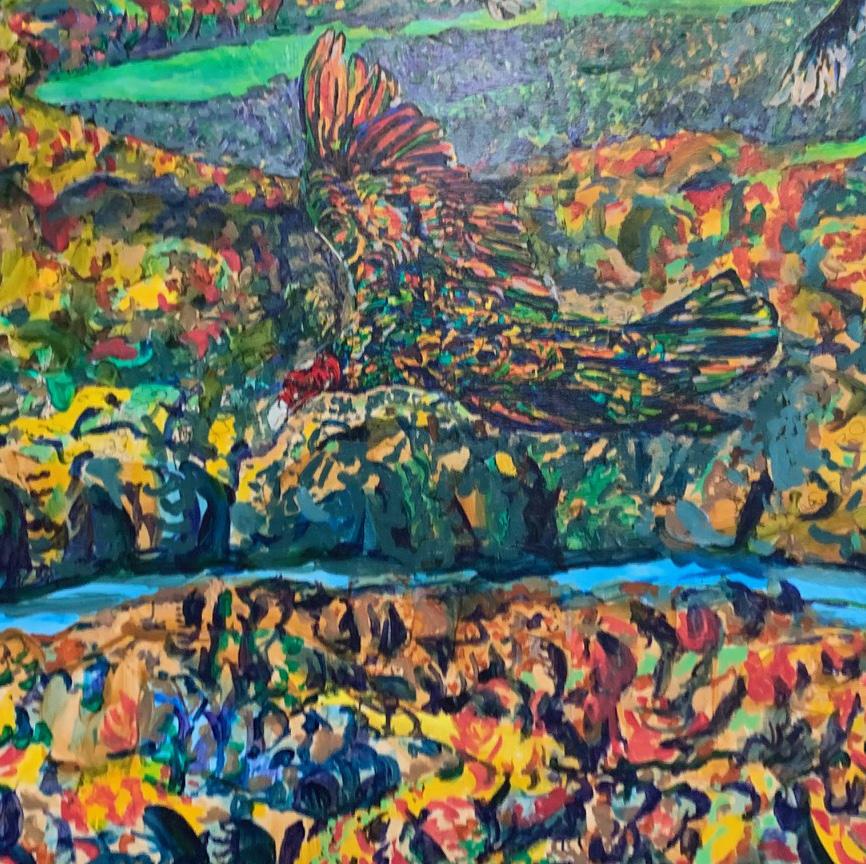
3 minute read
THINKING OUTSIDE THE BLUE BOX
My last name always reminds me I was born, “one starry night”, in the Netherlands. However I am proud to call Canada my home!
The Netherlands produce a high average of 2500 kg per person of waste, (720 kg in Canada), but the Dutch also recycle 1700 kg, (75%) of that total. They also use the highest % of recycled materials in their manufacturing processes. In Canada we only recycle 30% of our waste.
Advertisement
They say a journey of a thousand miles begins with one step. Consider this please. I am always gobsmacked at how many receipts I’m presented with when I shop locally. If I want them or not, they get printed and if I refuse to take them, they end up in the landfill.
Imagine no receipts. How many trees could be saved? How much less CO2 would be produced? How much landfill saved? An error made by a salesclerk two days ago produced, for me, a receipt of nearly TWO FEET!!
Of the three R’s please remember that REDUCE is the most important.
For Markdale artist Delia Eastwood, it almost always begins with a few colours and a sense of pattern. The relationship between the two is what fascinates her, even more than the subject, if there is one. As a child, she would draw and sketch using magic markers. Doodle art was her passion. Wallpaper patterns and album covers were a constant source of inspiration.
After completing high school in Waterdown, it likely surprised no one that Delia enrolled in the Graphic Arts program at Sheridan College. It became clear to her in the first term that she was not a good fit for the program. Delia was not as detail oriented as the program demanded, given that most of its graduates were looking for a career as commercial artists somewhere. Her second term saw a shift to the Liberal Arts, but at the end of the year, she decided not to pursue the diploma.
The experience at college, however, did yield one very important result for her. She was introduced to Betty Edwards “Drawing on the Right Side of the Brain”. It was life changing for Delia. For the first time, she saw drawing as something which could be learned, as opposed to something she just did. It also opened the door to an understanding of drawing as a meditative process, a spiritual journey. Undoubtedly, the practical exercises the book offered were useful, and the discipline and commitment they instilled in the young artist were undeniable, but for Delia, the most significant benefit she received from the book’s influence were the meditative qualities inherent in working without words above and beyond the intended lesson. Much of this she attributed to the similarities of the drawing exercises to the meditative process--- simple materials, privacy, stillness, and focus.
Once she elected not to return to college, Delia spent a couple of years in the food service industry. In many ways, this would be her apprenticeship, for she continued to practice her drawing. To establish her value as a professional artist, it would be all about her commitment and her approach. She understood inherently that the work she was doing during this period was not only part of her developmental process, it also served as a diary.
Although Delia did not really know what she wanted to do with her life back then, she did know that drawing would continue to be a part of it. So would her ongoing education. She enrolled at McMaster University, studying Philosophy for a couple of years, and finishing her degree with an emphasis on fine art. After graduation, she married, moved to Markdale, where she had three children, all the while continuing to draw as time permitted.
Over the years, whatever her job, whether a stint at Chapman’s or her time as a bookkeeper, her drawing, and increasingly, her painting was the throughline in her life. The pandemic, strangely enough, was good for her art, resulting in her leaving her job to concentrate on her work. She approaches each piece in a fresh way, almost like improvisation. The composition was planned, the undercoat was planned, but beyond that, the product was a response to what had already been done. It invariably grew out of a drawing, but she would often impose rules, like sketching to a clock as an exercise, for example. Like Harold Klunder, the individual piece is layered, and that takes time. To some degree, they are never really finished in her mind. Each painting is then signed and dated, but never titled, beyond as a reference the buyer creates.
Although every work becomes a moment in time, time itself remains fluid.
By: Kevin Land




